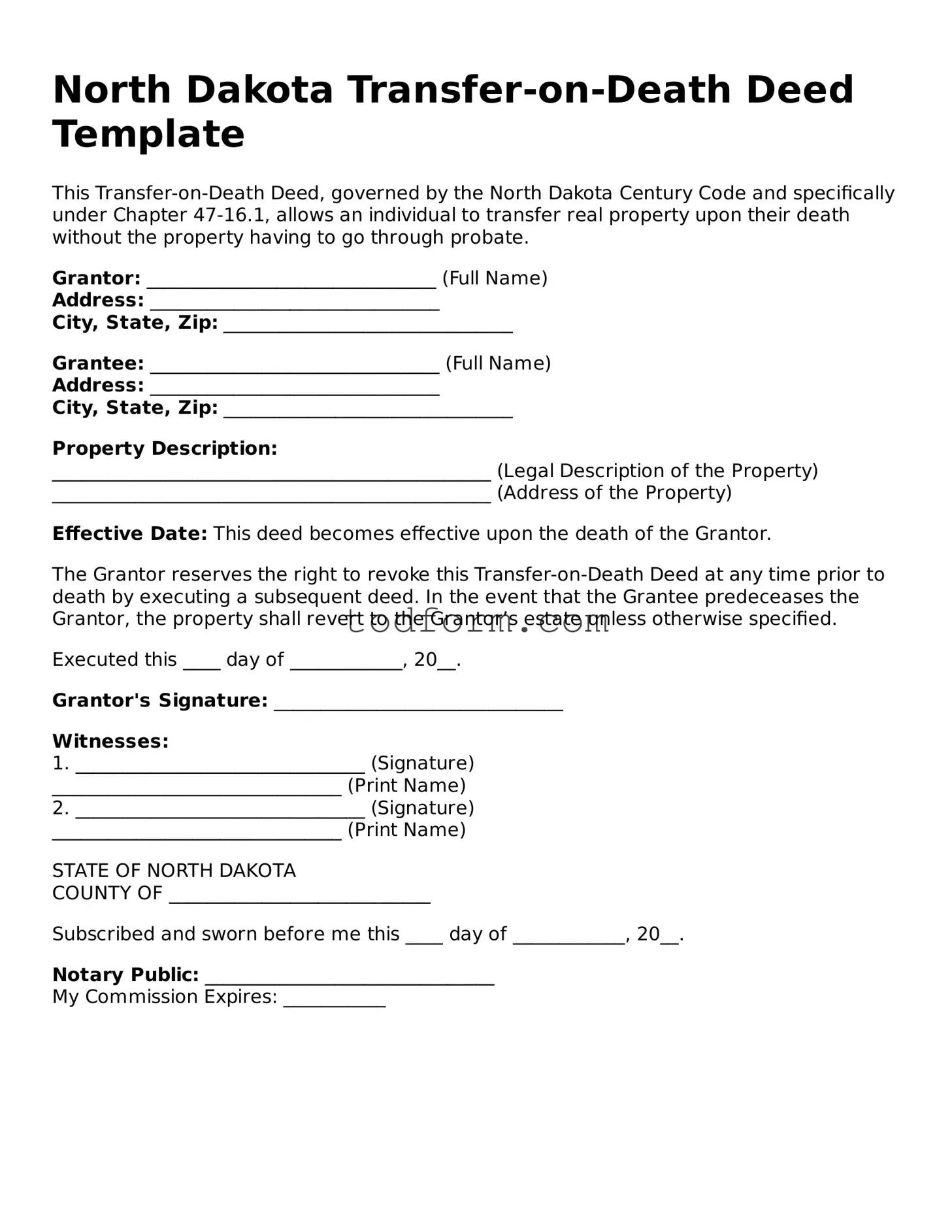North Dakota Transfer-on-Death Deed Template
This Transfer-on-Death Deed, governed by the North Dakota Century Code and specifically under Chapter 47-16.1, allows an individual to transfer real property upon their death without the property having to go through probate.
Grantor: _______________________________ (Full Name)
Address: _______________________________
City, State, Zip: _______________________________
Grantee: _______________________________ (Full Name)
Address: _______________________________
City, State, Zip: _______________________________
Property Description:
_______________________________________________ (Legal Description of the Property)
_______________________________________________ (Address of the Property)
Effective Date: This deed becomes effective upon the death of the Grantor.
The Grantor reserves the right to revoke this Transfer-on-Death Deed at any time prior to death by executing a subsequent deed. In the event that the Grantee predeceases the Grantor, the property shall revert to the Grantor’s estate unless otherwise specified.
Executed this ____ day of ____________, 20__.
Grantor's Signature: _______________________________
Witnesses:
1. _______________________________ (Signature)
_______________________________ (Print Name)
2. _______________________________ (Signature)
_______________________________ (Print Name)
STATE OF NORTH DAKOTA
COUNTY OF ____________________________
Subscribed and sworn before me this ____ day of ____________, 20__.
Notary Public: _______________________________
My Commission Expires: ___________
